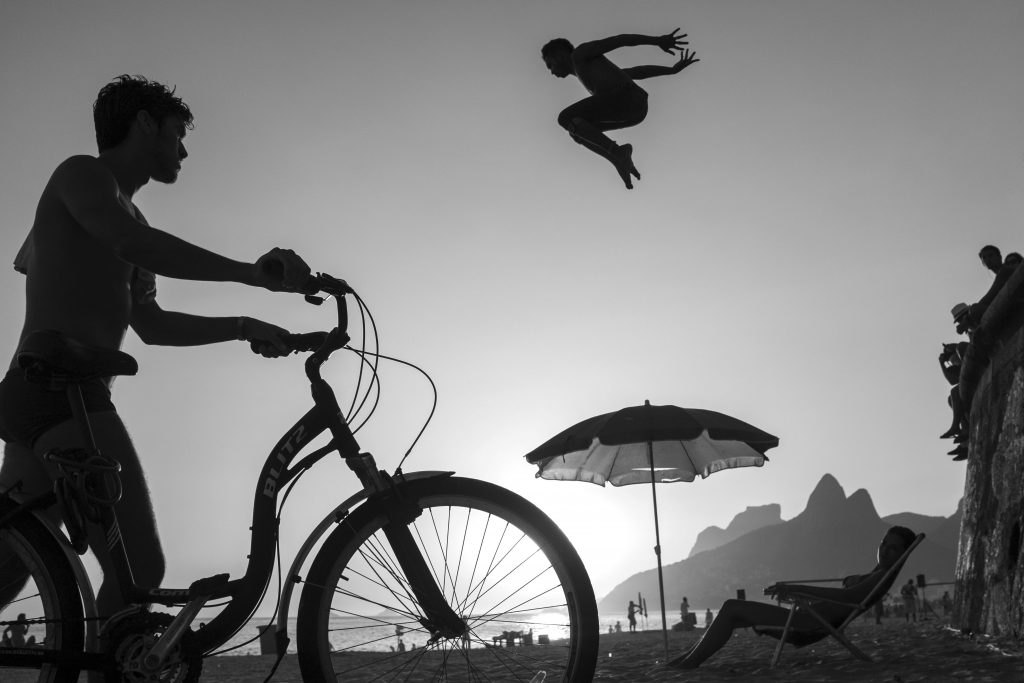
Ipanema Beach, Rio de Janeiro, 2014 — from ‘Magnum Streetwise’ © DAVID ALAN HARVEY/MAGNUM PHOTOS
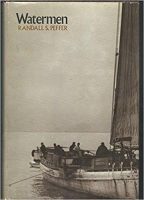 I’m pining a wee bit for the old days. Days when I was a raw reporter in his twenties in London and the only reading recommendations I felt I needed to note — apart from those from friends and colleagues — were in the books pages of The Observer and The Sunday Times. Days when I first started travelling for work, and found the best writing on wherever I happened to be on arrival there, in a bookshop. (I’m thinking, particularly, of Watermen by Randall S Peffer, a vivid and salty account of a year spent with the fishermen of the Chesapeake Bay on their graceful sailing boats, the skipjacks. Key “Watermen” and “Maryland” into a search engine, and Peffer’s book will pop up near the top of the results. I bought my copy on the spot, on the shore, in — if I remember rightly — the Chesapeake Bay Maritime Museum in St Michael’s.)
I’m pining a wee bit for the old days. Days when I was a raw reporter in his twenties in London and the only reading recommendations I felt I needed to note — apart from those from friends and colleagues — were in the books pages of The Observer and The Sunday Times. Days when I first started travelling for work, and found the best writing on wherever I happened to be on arrival there, in a bookshop. (I’m thinking, particularly, of Watermen by Randall S Peffer, a vivid and salty account of a year spent with the fishermen of the Chesapeake Bay on their graceful sailing boats, the skipjacks. Key “Watermen” and “Maryland” into a search engine, and Peffer’s book will pop up near the top of the results. I bought my copy on the spot, on the shore, in — if I remember rightly — the Chesapeake Bay Maritime Museum in St Michael’s.)
These days, each time I go online I find a tweet or link that suggests I should be adding to an already tottering to-be-read pile. I can’t find time to read the pieces I’ve bookmarked in the virtual world, let alone the books they might take me to in the real one. (I’m mindful, though, that it was in cyberspace that I was directed to what turned out to be two of my favourite books of last year. One was Lands of Lost Borders by Kate Harris. The other was Chesapeake Requiem by Earl Swift — which, as the title suggests, is concerned with the same territory as Peffer’s book, but in more dangerous times.)
All of which is a roundabout way of saying that, while I try to keep up with the best in new writing on travel and place, I don’t always manage it. This year there was a blizzard of promising books in the autumn. I have to give priority to books I’ve been commissioned and will be paid to review, even if they’re not always the ones I would choose to cover. Others go back on the TBR pile.
In print at the weekend (and online too) The Daily Telegraph published my choice of the best travel writing this year, plus picture books that I think would make good Christmas presents. I filed my roundup on November 12. By that stage, there were a lot of books I still hadn’t had a chance to read (and which I’ve since had time only to dip into). Among them were On The Plain of Snakes by Paul Theroux (Hamish Hamilton) and Pravda Ha Ha by Rory MacLean (Bloomsbury).
Among them, too, were new titles in translation by writers whose work I had hugely enjoyed in the past: Berezina: On Three Wheels from Moscow to Paris Chasing Napoleon’s Epic Fail by Sylvain Tesson, winner in 2014 of what was then the Dolman prize with Consolations of the Forest; Black Earth: A Journey Through Ukraine by Jens Mühling (Haus), whose A Journey into Russia was short-listed the following year for the rebranded Stanford Dolman prize; and So It Goes: Travels in the Aran Isles, Xian and places in between by Nicholas Bouvier (Eland).
Then there were a few books I had to excuse myself from reviewing on the basis that I know the author. One was Sara Wheeler’s Mud and Stars: Travels in Russia with Pushkin and Other Geniuses of the Golden Age (Jonathan Cape). I’m looking forward to that, especially after reading Julian Evans’s piece in The Daily Telegraph.
Of the books I did manage to read, these are my favourites…
Underland by Robert Macfarlane (Hamish Hamilton, £20)
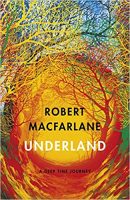 Over a series of books, Macfarlane has travelled from the peaks (Mountains of the Mind) to the depths, in a sustained and sensitive mapping of the relationship “between landscape and the human heart”. Underland sees him tunnelling into the world beneath our feet and what we’ve made of it, physically, with mines and tombs, and metaphorically, with myths and legends. It takes him from Bronze Age funeral chambers in Somerset, via the catacombs of Paris, to a nuclear bunker in Finland. It’s a book that expands our notions of what constitutes landscape. It’s one full of wonders — in Kulusuk, Greenland, he celebrates “the wildest land I have ever seen” — but also of warnings of the harm we are doing in this overheated age of the Anthropocene.
Over a series of books, Macfarlane has travelled from the peaks (Mountains of the Mind) to the depths, in a sustained and sensitive mapping of the relationship “between landscape and the human heart”. Underland sees him tunnelling into the world beneath our feet and what we’ve made of it, physically, with mines and tombs, and metaphorically, with myths and legends. It takes him from Bronze Age funeral chambers in Somerset, via the catacombs of Paris, to a nuclear bunker in Finland. It’s a book that expands our notions of what constitutes landscape. It’s one full of wonders — in Kulusuk, Greenland, he celebrates “the wildest land I have ever seen” — but also of warnings of the harm we are doing in this overheated age of the Anthropocene.
The Summer Isles by Philip Marsden (Granta, £20)
 When the anthropologists arrive, so the saying goes, the gods depart. There are places, though, where myth and magic held out; where phantom islands on the horizon and fairies under the earth endured for longer. Among them are the west coasts of Ireland and Scotland, which Philip Marsden (who has a degree in anthropology) explores from the sea in this marvellous book. Like one of those doorways so popular in Irish myth, it’s a portal not just to other places but to other times. It’s a reminder, as he puts it, that “the imagination is the oddest of human faculties, and also perhaps the greatest”. Incidentally, The Summer Isles happens to be the best book I’ve read on a sailing trip since Jonathan Raban’s Coasting (1986).
When the anthropologists arrive, so the saying goes, the gods depart. There are places, though, where myth and magic held out; where phantom islands on the horizon and fairies under the earth endured for longer. Among them are the west coasts of Ireland and Scotland, which Philip Marsden (who has a degree in anthropology) explores from the sea in this marvellous book. Like one of those doorways so popular in Irish myth, it’s a portal not just to other places but to other times. It’s a reminder, as he puts it, that “the imagination is the oddest of human faculties, and also perhaps the greatest”. Incidentally, The Summer Isles happens to be the best book I’ve read on a sailing trip since Jonathan Raban’s Coasting (1986).
The Last Whalers by Doug Bock Clark (John Murray, £20)
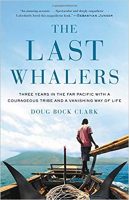 Clark, a 30-year-old American, lived for a year among the Lamalerans, a tribe of 1,500 on a backwater Indonesian island who have survived for half a millennium by hunting sperm whales with bamboo harpoons from hand-carved boats. In this wonderfully assured debut, he shows what modernisation looks like when it arrives with the speed of a tsunami, in the shape of motorboats, drift-netting, electricity and mobile phones. It’s a rich, novelistic account based on diligent reporting, in which the story of the tribe is told through the triumphs and trials of individuals — and the author, in the manner of the great Norman Lewis, renders himself a semi-invisible man.
Clark, a 30-year-old American, lived for a year among the Lamalerans, a tribe of 1,500 on a backwater Indonesian island who have survived for half a millennium by hunting sperm whales with bamboo harpoons from hand-carved boats. In this wonderfully assured debut, he shows what modernisation looks like when it arrives with the speed of a tsunami, in the shape of motorboats, drift-netting, electricity and mobile phones. It’s a rich, novelistic account based on diligent reporting, in which the story of the tribe is told through the triumphs and trials of individuals — and the author, in the manner of the great Norman Lewis, renders himself a semi-invisible man.
Surfacing by Kathleen Jamie (Sort Of Books, £12.99)
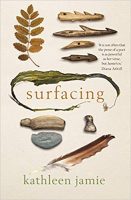 Kathleen Jamie is a writer who enjoys teasing out unlikely links. In her previous essay collection, the prize-winning Sightlines, she explored the liver as a landscape through a microscope in a hospital pathology lab. In this one, she joins archaeologists at sites in Alaska and Orkney in their “daily wrestle with the earth”, and mines her own memories — of family and of youthful travels — to see what surfaces and what connects us to our past. It’s a deep and rewarding dig. As with archaeological sites, it’s also layered. Having read it first in proof, I opened it again when a finished copy arrived. It repays re-reading.
Kathleen Jamie is a writer who enjoys teasing out unlikely links. In her previous essay collection, the prize-winning Sightlines, she explored the liver as a landscape through a microscope in a hospital pathology lab. In this one, she joins archaeologists at sites in Alaska and Orkney in their “daily wrestle with the earth”, and mines her own memories — of family and of youthful travels — to see what surfaces and what connects us to our past. It’s a deep and rewarding dig. As with archaeological sites, it’s also layered. Having read it first in proof, I opened it again when a finished copy arrived. It repays re-reading.
Elsewhere by Rosita Boland (Doubleday Ireland/Penguin, £14.99)
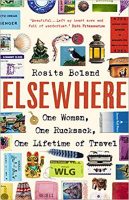 Rosita Boland is a feature writer for The Irish Times and was journalist of the year in Ireland for 2018. Before she was a reporter, she was a wanderer, travelling the world between short-term jobs, and she still takes unpaid leave to respond to what the Germans call fernweh, an ache for distant places, which has taken her to Australia and Antarctica, Peru and Pakistan. She has an ache, too, to have a child, which has never been answered. In Elsewhere, she writes beautifully and movingly of three decades on the road, and the consolations she has found there.
Rosita Boland is a feature writer for The Irish Times and was journalist of the year in Ireland for 2018. Before she was a reporter, she was a wanderer, travelling the world between short-term jobs, and she still takes unpaid leave to respond to what the Germans call fernweh, an ache for distant places, which has taken her to Australia and Antarctica, Peru and Pakistan. She has an ache, too, to have a child, which has never been answered. In Elsewhere, she writes beautifully and movingly of three decades on the road, and the consolations she has found there.
Horizon by Barry Lopez (Bodley Head, £25)
 “Travel/Natural History,” ventures the publisher’s classification. Well, those are part of it. Horizon encompasses both the conquistadors’ lust for gold and the mining of Big Data; its author’s searches on the ice shelf for meteorites and in the desert for hominid fossils. It’s an angry book about the “throttled Earth” and what we Earthlings have done to it (though there’s no acknowledgement of Lopez’s own carbon footprint). It’s life-affirming, too, in its depictions of the wonders that remain. It runs to 512 pages plus 60 of notes and index, which is a lot for our distractible times, but you’ll find it a lot smarter than your phone.
“Travel/Natural History,” ventures the publisher’s classification. Well, those are part of it. Horizon encompasses both the conquistadors’ lust for gold and the mining of Big Data; its author’s searches on the ice shelf for meteorites and in the desert for hominid fossils. It’s an angry book about the “throttled Earth” and what we Earthlings have done to it (though there’s no acknowledgement of Lopez’s own carbon footprint). It’s life-affirming, too, in its depictions of the wonders that remain. It runs to 512 pages plus 60 of notes and index, which is a lot for our distractible times, but you’ll find it a lot smarter than your phone.
A Savage Dreamland: Journeys in Burma by David Eimer (Bloomsbury, £20)
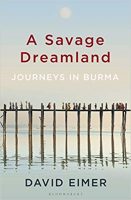 In the brochures, Burma (Myanmar) is a country of “temple-strewn landscapes” and “enduring tribal traditions”. But it is also one with more than 30 ethnic armies and militias, whose battles with the Tatmadaw, the Burmese military, are, as Eimer puts it, “the longest-running civil wars in modern history”. He listens to people of as many factions as he can in a disunited nation, explaining wonderfully well why Burma today is both compelling and combustible. If George Orwell, who served as a police officer in Burma in the 1920s, could read it, he would surely be impressed by this choral-voiced account of a country where so many, for so long, have been silenced.
In the brochures, Burma (Myanmar) is a country of “temple-strewn landscapes” and “enduring tribal traditions”. But it is also one with more than 30 ethnic armies and militias, whose battles with the Tatmadaw, the Burmese military, are, as Eimer puts it, “the longest-running civil wars in modern history”. He listens to people of as many factions as he can in a disunited nation, explaining wonderfully well why Burma today is both compelling and combustible. If George Orwell, who served as a police officer in Burma in the 1920s, could read it, he would surely be impressed by this choral-voiced account of a country where so many, for so long, have been silenced.
Around the World in 80 Trains by Monisha Rajesh (Bloomsbury, £20)
 In the age of high-speed rail, with a wooomph! on the tracks and a blur through the windows, you might think there’s little to savour and less to say about long-distance train travel. You’d be wrong: as Monisha Rajesh triumphantly demonstrates, there’s life yet in both the trip and the telling. One of her best passages is on Hiroshima, a few of whose residents survived the immediate after-effects of the atomic bomb of 1945 by fleeing on trains. She finds trains life-enhancing as well as life-saving. In Thailand, on swapping food with a Dutch family, she’s told: “We have a word… gezellig, which means that there are no boundaries and that everyone is sharing and getting along… like we are a train family.” Gezellig resounds through Rajesh’s pages.
In the age of high-speed rail, with a wooomph! on the tracks and a blur through the windows, you might think there’s little to savour and less to say about long-distance train travel. You’d be wrong: as Monisha Rajesh triumphantly demonstrates, there’s life yet in both the trip and the telling. One of her best passages is on Hiroshima, a few of whose residents survived the immediate after-effects of the atomic bomb of 1945 by fleeing on trains. She finds trains life-enhancing as well as life-saving. In Thailand, on swapping food with a Dutch family, she’s told: “We have a word… gezellig, which means that there are no boundaries and that everyone is sharing and getting along… like we are a train family.” Gezellig resounds through Rajesh’s pages.
PICTURE BOOKS

Wild asses in a wild land: a group of kiangs stride out after a snowfall in search of grass in the Kumukuli Desert on the edge of the Qinghai-Tibet Plateau — from ‘Wildlife Photographer of the Year’ © SHANGZHEN FAN
Wildlife Photographer of the Year: Portfolio 29 (Natural History Museum, £25)
 The Travel Photographer of the Year and Landscape Photographer of the Year competitions are both taking a break from publishing a book in 2019, but another dependable British-based showcase is open as usual. The 100 pictures between the covers, chosen from 48,130 entries from a record-breaking 100 countries, offer both the richness of the natural world and reminders (poisoned lions, logged forests) of its fragility. Rosamund Kidman Cox, chair of the judges, notes significant increases this year in entries from Tajikistan, Mongolia and China and in outstanding pictures of animal behaviour. The moment captured by the winner, Yongqing Bau, a Tibetan from the Chinese province of Qinghai, is as arresting for the viewer as it was for one of the subjects: a marmot realising that there’s no escape from a fox.
The Travel Photographer of the Year and Landscape Photographer of the Year competitions are both taking a break from publishing a book in 2019, but another dependable British-based showcase is open as usual. The 100 pictures between the covers, chosen from 48,130 entries from a record-breaking 100 countries, offer both the richness of the natural world and reminders (poisoned lions, logged forests) of its fragility. Rosamund Kidman Cox, chair of the judges, notes significant increases this year in entries from Tajikistan, Mongolia and China and in outstanding pictures of animal behaviour. The moment captured by the winner, Yongqing Bau, a Tibetan from the Chinese province of Qinghai, is as arresting for the viewer as it was for one of the subjects: a marmot realising that there’s no escape from a fox.
Water: A Journey Through The Element by Rudi Sebastian (te Neues, £29.95)
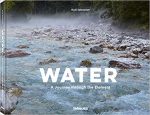 For the past few years the German photographer Rudi Sebastian has been travelling the world intent on capturing water in all its forms: solid, liquid and gas. It’s a journey that has taken him from Costa Rica to China; from seasonal lakes between sand dunes in Brazil — the Lençois Maranhenses — to the rapidly melting Arctic home of the polar bear; from the Bay of Cadiz, where gentle, non-intrusive cultivation has helped to increase biodiversity, to Xiapu, in China, where farming of fish and seafood is on an industrial scale. There’s a terrible beauty to his pictures of the last, and, elsewhere, images that recall the work of Monet and Turner. An artist very much in his element.
For the past few years the German photographer Rudi Sebastian has been travelling the world intent on capturing water in all its forms: solid, liquid and gas. It’s a journey that has taken him from Costa Rica to China; from seasonal lakes between sand dunes in Brazil — the Lençois Maranhenses — to the rapidly melting Arctic home of the polar bear; from the Bay of Cadiz, where gentle, non-intrusive cultivation has helped to increase biodiversity, to Xiapu, in China, where farming of fish and seafood is on an industrial scale. There’s a terrible beauty to his pictures of the last, and, elsewhere, images that recall the work of Monet and Turner. An artist very much in his element.
Magnum Streetwise edited by Stephen McLaren (Thames & Hudson, £28)
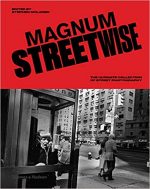 Street photography — “candid photography in the public realm”, as McLaren defines it in this glorious celebration — has been part of the repertoire of Magnum since its beginnings in 1947. Indeed, one of the agency’s founders, Henri Cartier-Bresson, had pioneered it from 1930, exploiting the possibilities offered by the newly available Leica and a standard lens on trips around Europe and Mexico. “Street” can embrace market and museum, beach as well as bus. Four cities have exerted a particular pull: Paris, New York, London and Tokyo. For each, McLaren looks into themes and favourite hunting grounds, and sees how the approach of photographers has changed as the city has evolved.
Street photography — “candid photography in the public realm”, as McLaren defines it in this glorious celebration — has been part of the repertoire of Magnum since its beginnings in 1947. Indeed, one of the agency’s founders, Henri Cartier-Bresson, had pioneered it from 1930, exploiting the possibilities offered by the newly available Leica and a standard lens on trips around Europe and Mexico. “Street” can embrace market and museum, beach as well as bus. Four cities have exerted a particular pull: Paris, New York, London and Tokyo. For each, McLaren looks into themes and favourite hunting grounds, and sees how the approach of photographers has changed as the city has evolved.
Portrait of Humanity (Hoxton Mini Press, £22.95)
 What do two centenarians, cuddling on a plump sofa in their Los Angeles apartment, share with a a newborn refugee, 30 seconds old, howling in its mother’s arms in a refugee camp in Tanzania? That’s the question this book, with 200 images from more than 65 countries, asks you to ponder. It’s a follow-up to Portrait of Britain, and a collaboration between 1854 Media — publisher of The British Journal of Photography — and the picture agency Magnum. As Lucy Davies of The Telegraph arts desk puts it in her introduction, it’s “a crowd-sourcing of the climate, a map of global fears and wants, and as much a reflection of the things we have in common as the things that make us different”.
What do two centenarians, cuddling on a plump sofa in their Los Angeles apartment, share with a a newborn refugee, 30 seconds old, howling in its mother’s arms in a refugee camp in Tanzania? That’s the question this book, with 200 images from more than 65 countries, asks you to ponder. It’s a follow-up to Portrait of Britain, and a collaboration between 1854 Media — publisher of The British Journal of Photography — and the picture agency Magnum. As Lucy Davies of The Telegraph arts desk puts it in her introduction, it’s “a crowd-sourcing of the climate, a map of global fears and wants, and as much a reflection of the things we have in common as the things that make us different”.
Northwest by Alex Nail (£36 plus p&p, via alexnail.com)
“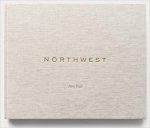 The only bearable way to be on top of a peak for a 4.30am sunrise is to sleep on the mountain,” says Alex Nail. That’s how most of the images in his book were made. There’s no trace of the effort that went into them; of his endurance of blizzards in winter and midges in summer. But his love of the mountains and lochans of the Northwest Highlands is evident on every page. His approach might be considered old-fashioned, but that doesn’t bother him. His aim is to recreate, as far as he can, what he saw in front of him, rather than to reinterpret it: “photography can be more than art; reality is powerful. Photography can transport the viewer.” His pictures certainly do.
The only bearable way to be on top of a peak for a 4.30am sunrise is to sleep on the mountain,” says Alex Nail. That’s how most of the images in his book were made. There’s no trace of the effort that went into them; of his endurance of blizzards in winter and midges in summer. But his love of the mountains and lochans of the Northwest Highlands is evident on every page. His approach might be considered old-fashioned, but that doesn’t bother him. His aim is to recreate, as far as he can, what he saw in front of him, rather than to reinterpret it: “photography can be more than art; reality is powerful. Photography can transport the viewer.” His pictures certainly do.
Through My Eyes: Journey of a Wildlife Veterinarian by Dr Michael D Kock (IWVS Africa, £75 plus p&p via through-my-eyes.co.za)
 Michael Kock describes himself as “a large-landscape, no-fences, wilderness-focused wildlife veterinarian”. Through My Eyes is a remarkable photographic record of a working life that has taken him, over 40-plus years, to four continents and 13 African countries, including his native South Africa. There are as many images of people as of wilderness and wildlife, for his work goes far beyond darting an elephant, roping a giraffe or relocating a hippo. And the first step in conserving a wild landscape, he argues, is to give the humans who share it an interest in being good stewards. His book, running to 600 pages and 1,400 photographs, would have benefited from an edit, but it’s still a compelling account of a singular day job.
Michael Kock describes himself as “a large-landscape, no-fences, wilderness-focused wildlife veterinarian”. Through My Eyes is a remarkable photographic record of a working life that has taken him, over 40-plus years, to four continents and 13 African countries, including his native South Africa. There are as many images of people as of wilderness and wildlife, for his work goes far beyond darting an elephant, roping a giraffe or relocating a hippo. And the first step in conserving a wild landscape, he argues, is to give the humans who share it an interest in being good stewards. His book, running to 600 pages and 1,400 photographs, would have benefited from an edit, but it’s still a compelling account of a singular day job.

Leave a Reply